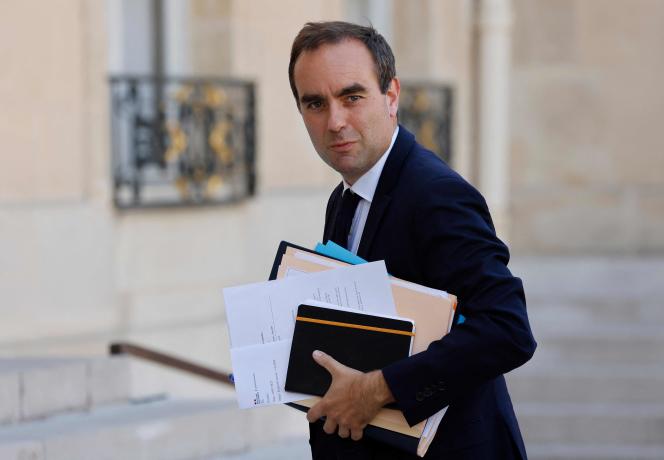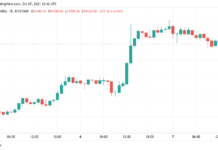It is the end of a suspense that was weighing heavily on military circles. The Minister for the Armed Forces, Sébastien Lecornu, assured Thursday, July 7, during his first hearing before the Defense Committee of the National Assembly, that the budget of the armies would be well up by at least 3 billion euros in 2023, in accordance with the military programming law (LPM) 2019-2025. An announcement which must however be confirmed during a defense council scheduled, according to our information, at the very beginning of the week, before July 14, and which only lifts part of the veil on thorny arbitrations which must be spread out throughout the summer on the distribution of these investments.
This announcement by the Minister for the Armed Forces, which comes in a geopolitical context tense by the war in Ukraine, was generally hailed as good news by parliamentarians. The cabinet of Mr. Lecornu had already hinted in recent days that this “march” of three billion was acquired, even if, as Jean-Charles Larsonneur, deputy of Finistère (Horizons) recalls: “There are still six months, we were not sure that it would be respected. The LPM has often raised doubts among specialists, because despite an increase of 1.7 billion euros per year since 2019, the most important efforts have always been planned after 2022, therefore linked to the outcome of the presidential election.
This march of 3 billion euros which brings the budget of the armies to 44 billion euros in 2023 will not exempt the armies from complex choices either. The projection of soldiers in Romania was, for example, not included in the budget, revealed Mr. Lecornu. This unprecedented increase in the sums allocated to defense is also part of a context of high inflation (6.6% in June) and an explosion in the public deficit (5.5% of GDP). “If you stay on that revenue curve, and you want more stuff, you’ll have to take some from somewhere else,” sums up one observer.
Tight interministerial negotiations
Mr. Lecornu’s announcement corresponds to a general envelope which will be part of the finance bill submitted to Parliament in the fall. During his hearing, the Minister assured that inflation “will be dealt with” in this bill. The text must nevertheless be the subject of interministerial negotiations which promise to be tight. The challenge for the armies between now and the start of the school year is therefore to succeed in defining the priorities within this envelope. A “reassessment” exercise that takes place every year, but is made more pressing by the war in Ukraine and the fact that the head of state explicitly called for it in mid-June.
Replenishing certain ammunition stocks now appears to be one of the priorities. Even if the Air Force and the Navy regularly consider that the format of their respective fleets is too limited compared to the ambitions displayed by the executive, particularly in the Indo-Pacific, this year the Army is particularly pushing its pawns as the Ukrainian conflict has highlighted the importance of the role of infantry, artillery, drones, and ground-to-air defence. Equipment abandoned in recent years.
In 2021, it was thus decided to postpone by one year the order and the deliveries of 32 Caesar guns and the renovation of the 77 others held by France, according to a report by senators Cédric Perrin (LR) and Hélène Conway-Mourret ( PS) published at the end of 2021. Guns claimed by the Ukrainians of which France delivered 18 units. In 2021, arbitrations also led to the staggering of anti-tank missile deliveries planned for 2024-2025 until 2026. Medium-range missiles developed to replace the Milan, a certain number of which were sent to Ukraine.
Reassemble equipment stocks
In addition to the finance bill for 2023, the executive has a faster lever for possible “adjustments”, in the words of Mr. Lecornu: the amending finance bill which was presented on Thursday 7 July and should be adopted by the end of the month. This text includes an envelope of 300 million euros for defense corresponding to funds frozen a few months ago. The programs that could benefit from these funds have not been specified at this stage, “but one can imagine that there is a need to replenish the stocks given to Ukraine,” said Mr. Larsonneur.
A certain frustration persists within defense circles, where it is considered that despite budgetary constraints and the warnings of the Court of Auditors in mid-May, the response should be stronger, and immediate. Some sources refer to the year 1983 and its “turn of rigor” when the Cold War was in full swing. The share of defense spending, then, represented nearly 3% of GDP while inflation hovered around 10% due to the second oil shock. “Not everyone has been traumatized by Ukraine to the point of forgetting the macroeconomic realities,” summarizes a good connoisseur.
Raising equipment stocks is however a subject that does not depend solely on budgetary envelopes, concede the same interlocutors. If manufacturers need orders, production can be long. A whole range of work is thus being carried out by the General Directorate of Armaments to improve energy supplies and dependencies. “We must be careful not to be left behind by Germany, which has released 100 billion euros for its army, but buying immediately would be tantamount to favoring financial flows to the United States”, sums up the former MP LRM Fabien Gouttefarde, good connoisseur of defense issues.














